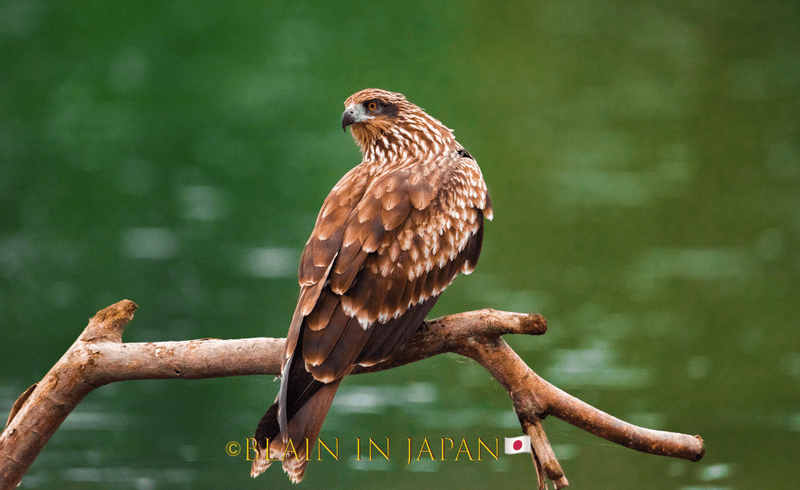Sep 15, 2022
Bird Banding - Supporting Bird Conservation
Gallery - Bird Banding - Supporting Bird Conservation

Bird banding is one of the our most successful tools in our abilities to study wild birds, and support bird conservation worldwide, as birds cross borders to migrate, naturally of course without a passport. Wild birds are captured and marked with a numbered leg band. Where do swallows that breed in Japan and remain all summer migrate to in the winter? The Greek philosopher Aristotle thought that swallows hibernated inside hollow trees or underneath the ground. Even to this day each spring as the swallows return, people wonder, are these the same birds returning to their nest from the following year, or are they the offspring or completely different birds. And another question is, where did they winter over? Because of bird banding we now know that swallows that summer over in Japan winter over in the Philippines, Vietnam, Malaysia, Cambodia, Indonesia and other Nations that are over 2000 Kilometers away from Japan, have reported finding “Tokyo Japan, Niigata Japan, Hokkaido Japan, and other location across Japan” inscribed on the bird bands, with a message “please inform us” along with the bird's number. And by people who report this data, we know when and who banded the bird. Bird banding is a fantastic research method used to acquire accurate information about the movement and life span of various birds species.
As a multi-themed pro photographer, including birding and wildlife photography, I have close to 30 years of worldwide birding logbook entries. I have recorded about half of our world's species, but to be honest, I am not a hardcore birder, "a hardcore birder, in my opinion, is a person who only talks, thinks and looks to spot birds." Most hardcore birders are retired from their main jobs or are wildlife management specialists or only birding photographers. To be honest only birding photography I have tried, and I was successful, but Too often, I see my fellow photographers focusing on one, or possibly, two themes. As a teacher of the visual arts, I feel this is a catastrophic mistake. As the zen master, D.T. Suzuki, said, “I like zen because everything is zen.” My vision is to explore and always experience life with the beginner’s mind. A beginner sees myriad possibilities in each theme and pursuit, and that is the mindset I bring to each project I participate in. Many colleagues and fellow photographers feverishly hold onto their pride and feel that because they are experts, they know the best expression of a theme and therefore limit the potential of the photographic subject. My goal is to discover the emotion, the personality, and connection expressed in the subject to myself and fellow visual artists. That subject can be wildlife-birding, landscapes, flowers, or street photography. Virtually anything that has light cast upon it can be that subject, even if I am the author of that light source. So I can not and do not devout all my attention to birding, I love birding I have been living in Japan for over twenty years; I have photographed hundreds of bird species across Japan. I have recorded and reported several bird bands, from images of live birds to ones found on a leg bone on the ground. Two of my favorite places for birding in Japan are in Hokkaido, where one of our main species in the Steller’s Sea Eagle, my second favorite place for birding in Japan is in Niigata.
Have you ever wondered which species of bird travels the longest to migrate? Well this all depends on the bird species; among the long-distance travelers, some travel back and forth halfway around the planet, from their winter feeding grounds to their spring-summer home and birthplace. Because of bird banding, we now know A South Polar Skua (Stercorarius Maccormicki) was banded in Antarctica and that it crossed the Equator traveling 12,800 KM and was found on the Pacific Coast in Hokkaido Japan. This Sea bird to date holds the reordered record for birds migrating the longest distance to Japan. Birding in Japan is becoming increasingly popular with international birders and birding photographers, with over 600 bird species recorded, over 60% of these are migratory. Species that are either endemic or sub-regional endemic induced the Blakiston’s Fish-owl, Red-Crowned, Pyer’s Woodpecker, Japanese White-eye, Black Kite, Shima Enaga, and many others, there are over 60 species in this category. Japan is latitudinally long at over 3000 kilometers, located in the Northwest Pacific Ocean; climates range from subarctic, similar to Alaska conditions in the north to subtropical in the south. There are two distinct ecological lines dividing Japan's natural indigenous plant and animal life. “The Blakiston’s Line” and the “Watase’s Line.” Due to this uniquely rare ecological condition, Japan is avifauna abundantly rich, making it the perfect location for birding and wildlife photographers, and with 6,852 islands, there are many locations off the beaten path for birding in Japan.
I never thought I would call Japan my home, but after 20 years I understand the beauty and appeal of Land of the Rising Sun. Part of my affection for Japan stems from my bride, Manami who introduced me to the essence of this magical land. As an amateur historian and sociologist, the uniqueness of Japan’s past captured my heart and soul, bonding me to the society and culture that is now a part of me. This society has embraced me, and I am no longer a visitor, I have recast myself as a cultural hybrid, always updating my identity with the rich cultural information from the past into the present, and, invariably, the future.



0 Comments